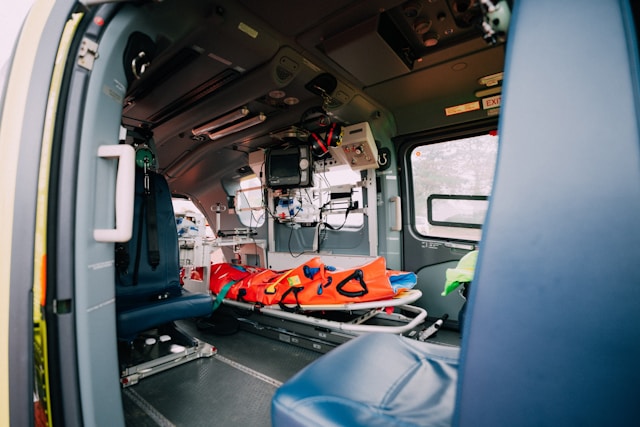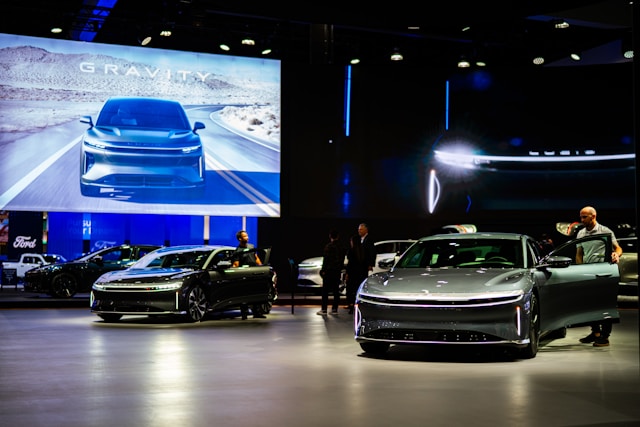The automotive industry is undergoing a transformative evolution that’s reshaping not just how vehicles are built, but also how we experience mobility. From self-driving technologies to sustainability-focused advancements, the road ahead promises breakthroughs that could redefine transportation as we know it.
The Rise of Smart Vehicles and Connectivity
One of the most significant trends in the automotive industry is the integration of advanced connectivity in modern vehicles. Cars today are increasingly becoming smart devices on wheels, equipped with a wide array of sensors, data processors, and communication modules.
Thanks to innovations in telematics and the Internet of Things (IoT), vehicles can now communicate with each other and with road infrastructure in real time. This Vehicle-to-Everything (V2X) communication is crucial for enabling smarter traffic systems and improving road safety. For instance, a car might alert others in the vicinity about sudden braking or poor weather conditions, allowing drivers—or autonomous systems—to take preventive measures.
As 5G networks expand globally, the automotive industry will further benefit from high-speed data transmission. This means real-time navigation, instant vehicle diagnostics, and over-the-air software updates will become standard features, not just luxuries. Consumers will expect their vehicles to be as connected and responsive as their smartphones.
Autonomous Driving: Redefining Mobility
Self-driving vehicles are no longer just a concept confined to sci-fi movies. Major players in the automotive industry are investing heavily in autonomous driving technologies. Companies like Tesla, Waymo, and General Motors are racing to refine their AI systems to achieve full autonomy.
While Level 5 autonomy (fully self-driving with no human input) is still under development, many cars today already feature semi-autonomous capabilities like adaptive cruise control, lane-keeping assist, and automated parking. These features not only enhance safety but also improve the overall driving experience.
However, widespread adoption of autonomous vehicles will depend on regulatory approvals, infrastructure readiness, and public trust. As technology matures and laws evolve, the automotive industry will gradually shift towards a more autonomous future, potentially reducing traffic accidents and increasing accessibility for those unable to drive.
Electrification: Powering the Next Generation
Electric vehicles (EVs) are poised to become the new standard in the automotive industry. Concerns over climate change, fossil fuel dependency, and air pollution have accelerated the push toward cleaner transportation solutions.
Leading automakers are ramping up EV production and pledging to phase out internal combustion engines over the coming decades. Innovations in battery technology—such as solid-state batteries—are extending driving ranges and reducing charging times, making EVs more practical and appealing for the average consumer.
Governments around the world are also offering incentives to encourage EV adoption, including tax credits, free parking, and subsidies for home charging stations. These efforts are creating a strong demand for electric vehicles and compelling the automotive industry to innovate at an unprecedented pace.
Sustainable Manufacturing: Greening the Supply Chain
As consumer awareness of environmental issues grows, the automotive industry is being pressured to adopt more sustainable manufacturing practices. This includes reducing carbon emissions during production, sourcing eco-friendly materials, and recycling vehicle components.
Some automakers are exploring the use of bio-based plastics, recycled metals, and vegan leather interiors. Others are investing in renewable energy for their manufacturing facilities. These initiatives not only align with global climate goals but also appeal to environmentally conscious consumers who prioritize sustainability in their purchasing decisions.
Circular economy practices—where products are designed to be reused or remanufactured—are also gaining traction. The automotive industry is exploring ways to recover valuable materials from end-of-life vehicles, thereby reducing waste and conserving resources.
Advanced Safety Features: Saving Lives Through Technology

Safety continues to be a top priority in the automotive industry. Thanks to advances in sensor technologies, artificial intelligence, and machine learning, modern vehicles can now detect and respond to potential hazards much faster than human drivers.
Features like automatic emergency braking, blind-spot monitoring, and pedestrian detection are becoming standard across many new models. These systems use radar, cameras, and LiDAR to constantly scan the vehicle’s surroundings and intervene when necessary to prevent collisions.
Looking ahead, the integration of AI will further enhance vehicle safety by enabling predictive analytics. By analyzing driver behavior, road conditions, and traffic patterns, vehicles will be able to anticipate accidents before they happen, providing warnings or taking corrective actions in real time.
The Role of AI and Machine Learning
Artificial Intelligence (AI) and machine learning are at the heart of many technological advances in the automotive industry. From powering autonomous driving algorithms to optimizing fuel efficiency and personalizing user experiences, AI is revolutionizing how vehicles function.
Voice recognition systems, facial identification for security, and even emotional recognition are being embedded into modern vehicles. These smart systems can adjust climate controls based on passenger preferences, suggest routes based on driving habits, and even detect drowsiness or distraction in drivers.
In manufacturing, AI is helping automakers streamline production processes, detect quality issues early, and predict maintenance needs. The use of AI in logistics and supply chain management is also helping the automotive industry operate more efficiently and sustainably.
Mobility-as-a-Service (MaaS): Changing Ownership Models
The traditional notion of vehicle ownership is being challenged by the rise of Mobility-as-a-Service (MaaS) platforms. Instead of buying cars, many consumers are opting for ride-sharing, car subscription services, and on-demand mobility options.
This shift is driven by urbanization, environmental concerns, and the high cost of vehicle ownership. MaaS integrates various forms of transportation—such as buses, bikes, and ride-hailing—into a single accessible service, making travel more convenient and cost-effective.
For the automotive industry, this represents both a challenge and an opportunity. Automakers are beginning to position themselves as mobility providers rather than just car manufacturers, investing in shared vehicle fleets and developing user-friendly platforms that cater to this new mobility ecosystem.
Despite the optimism, the automotive industry faces several hurdles on the road to transformation. Regulatory uncertainties, infrastructure limitations, and cybersecurity threats are just a few of the obstacles that must be addressed.
Challenges and Opportunities Ahead
For instance, autonomous and connected vehicles present complex cybersecurity risks, requiring robust encryption and constant monitoring. Meanwhile, EV adoption hinges on the availability of charging stations, especially in rural areas.
Nevertheless, these challenges also present opportunities for innovation. Companies that can effectively navigate these hurdles will not only gain a competitive edge but also contribute meaningfully to shaping a more sustainable and connected world.
Final Thoughts: A Roadmap to the Future
The future of the automotive industry is not merely about building faster or flashier cars—it’s about creating smarter, safer, and more sustainable modes of transportation. As technology continues to advance and consumer expectations evolve, the automotive landscape will become more dynamic and diversified.
From autonomous driving and electrification to AI integration and shared mobility, each trend reflects a fundamental shift in how we perceive and utilize vehicles. The companies that embrace innovation and adapt quickly will be the ones steering the future of mobility.

